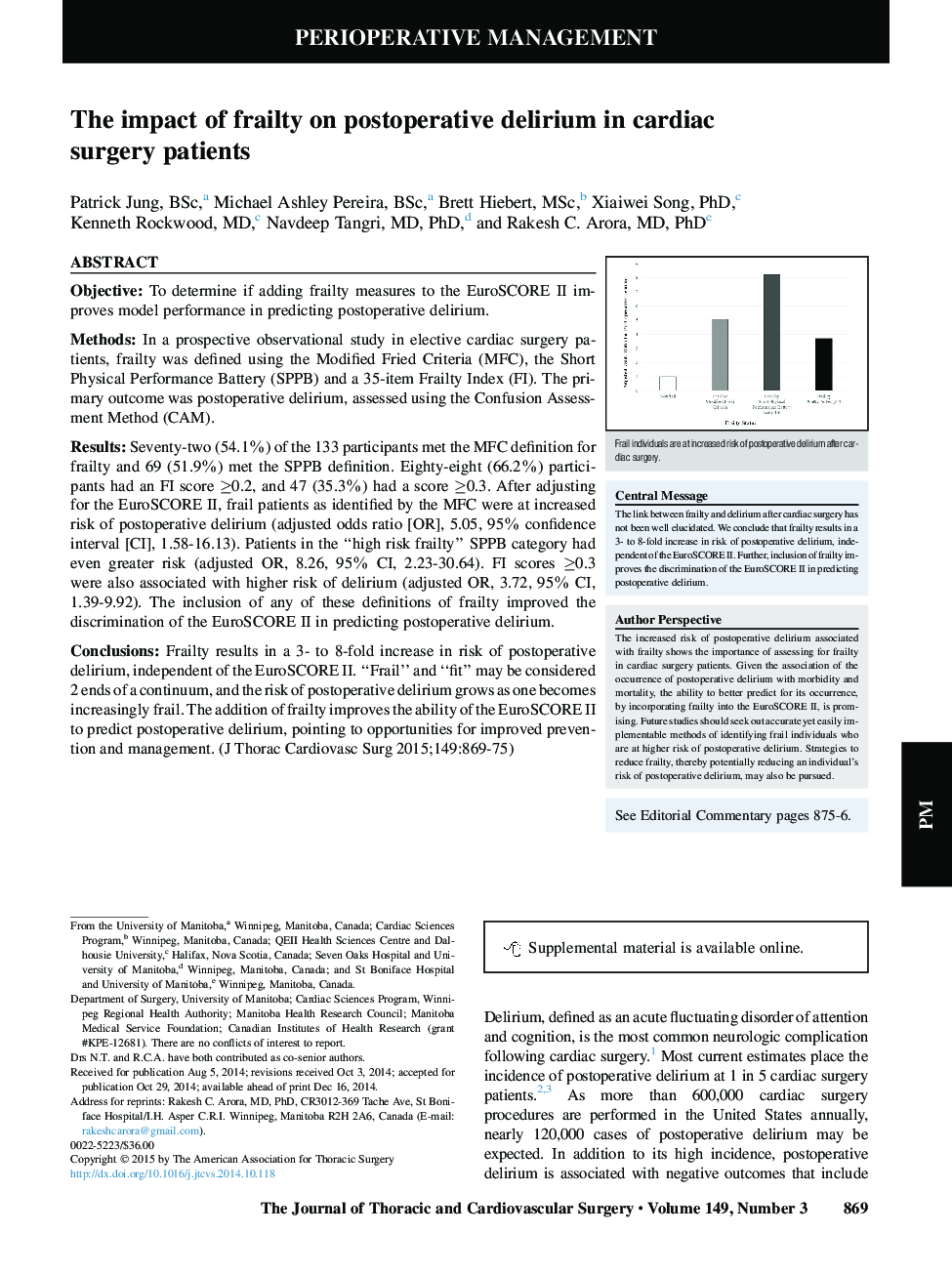| Article ID | Journal | Published Year | Pages | File Type |
|---|---|---|---|---|
| 5988943 | The Journal of Thoracic and Cardiovascular Surgery | 2015 | 9 Pages |
ObjectiveTo determine if adding frailty measures to the EuroSCORE II improves model performance in predicting postoperative delirium.MethodsIn a prospective observational study in elective cardiac surgery patients, frailty was defined using the Modified Fried Criteria (MFC), the Short Physical Performance Battery (SPPB) and a 35-item Frailty Index (FI). The primary outcome was postoperative delirium, assessed using the Confusion Assessment Method (CAM).ResultsSeventy-two (54.1%) of the 133 participants met the MFC definition for frailty and 69 (51.9%) met the SPPB definition. Eighty-eight (66.2%) participants had an FI score â¥0.2, and 47 (35.3%) had a score â¥0.3. After adjusting for the EuroSCORE II, frail patients as identified by the MFC were at increased risk of postoperative delirium (adjusted odds ratio [OR], 5.05, 95% confidence interval [CI], 1.58-16.13). Patients in the “high risk frailty” SPPB category had even greater risk (adjusted OR, 8.26, 95% CI, 2.23-30.64). FI scores â¥0.3 were also associated with higher risk of delirium (adjusted OR, 3.72, 95% CI, 1.39-9.92). The inclusion of any of these definitions of frailty improved the discrimination of the EuroSCORE II in predicting postoperative delirium.ConclusionsFrailty results in a 3- to 8-fold increase in risk of postoperative delirium, independent of the EuroSCORE II. “Frail” and “fit” may be considered 2 ends of a continuum, and the risk of postoperative delirium grows as one becomes increasingly frail. The addition of frailty improves the ability of the EuroSCORE II to predict postoperative delirium, pointing to opportunities for improved prevention and management.
